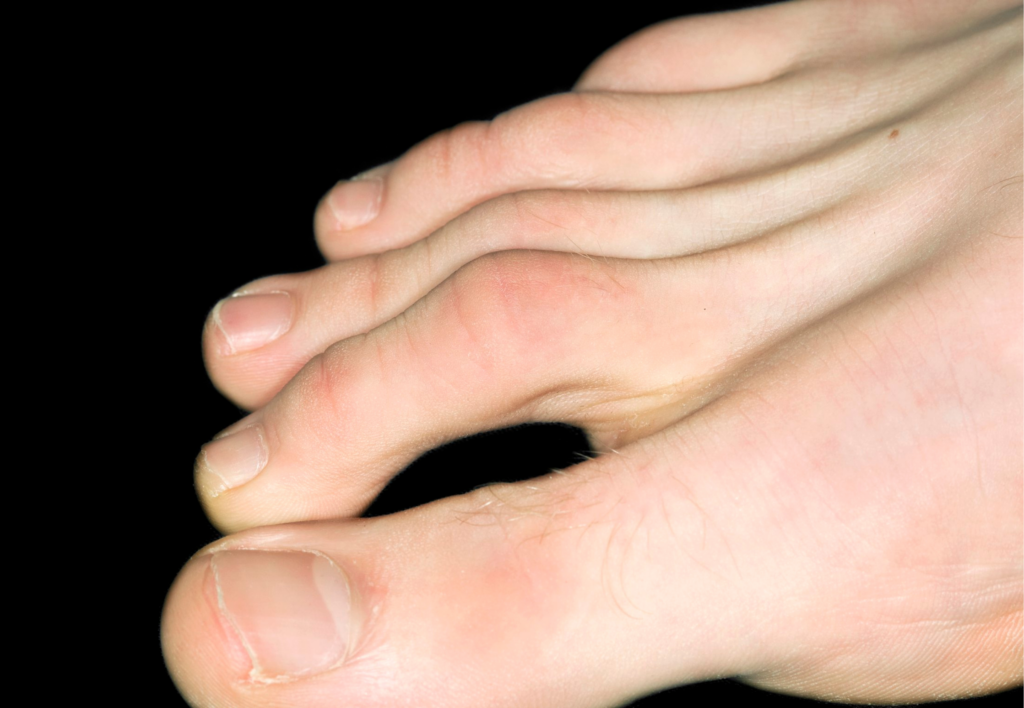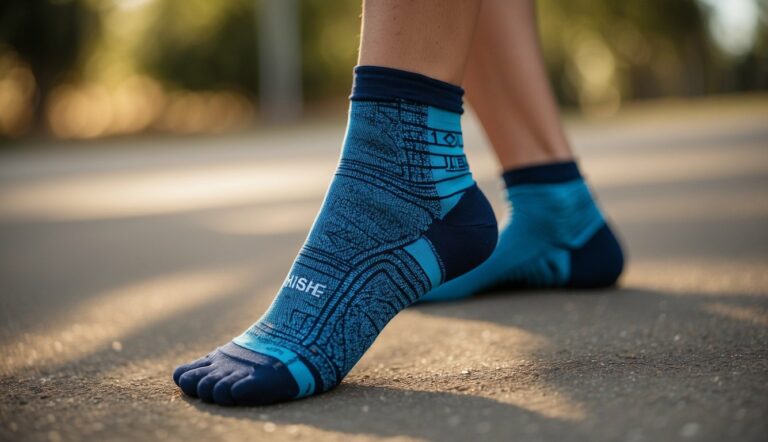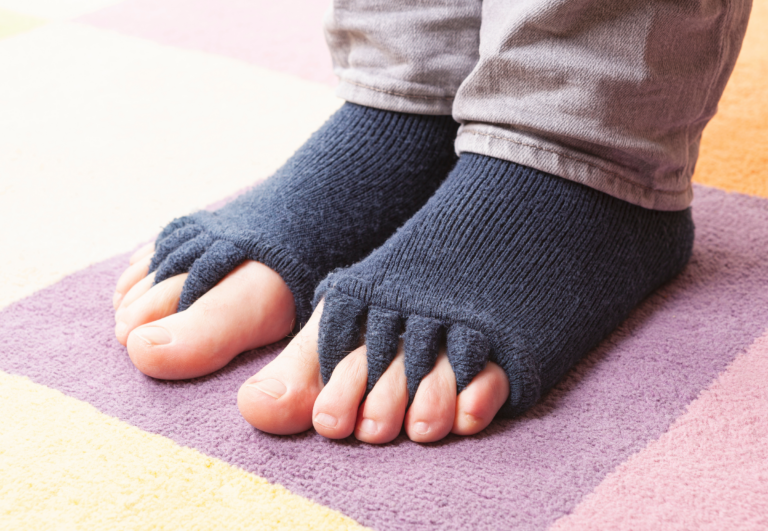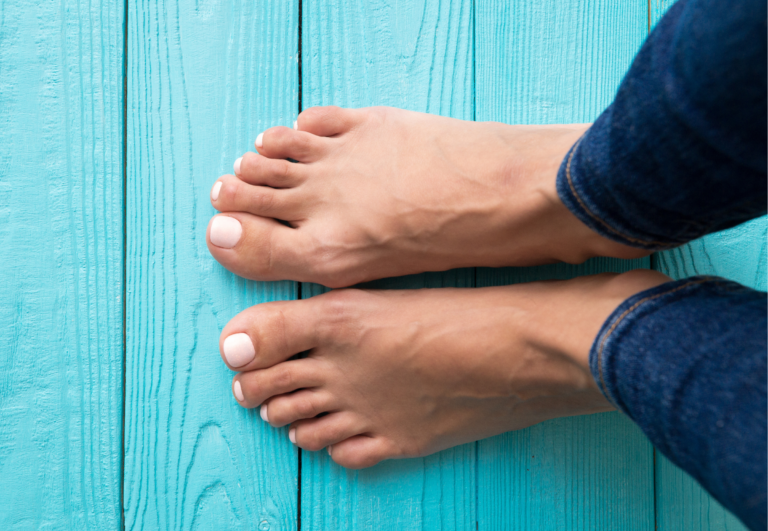Using Toe Spacers for Hammer Toes: Effective Alignment Solutions
As someone who has spent considerable time exploring non-invasive interventions for foot ailments, I understand that hammertoe can be quite uncomfortable. This toe deformity can lead to significant discomfort and difficulty in footwear. Using toe spacers is one of the effective solutions to mitigate the symptoms. These simple devices can work wonders in creating space between the toes, fostering proper alignment, and providing relief.
I’ve found that toe spacers are particularly beneficial for people wanting to straighten their toes gently and gradually. They help in alleviating the pressure on the tips of the toes by encouraging the proper joint positioning. By doing so, they contribute to the overall comfort of the foot, especially when standing or walking for extended periods. It’s a straightforward approach to addressing the cramped toe issues that so often accompany hammertoe.
Common symptoms linked with hammertoes include pain, inflammation, and restricted toe movement. By integrating toe spacers into your daily routine, you may observe a reduction in these symptoms. The consistent use of these spacers can lead to improvements in toe alignment and decrease the day-to-day discomfort associated with hammertoes. While they’re not a cure-all, toe spacers are a practical component of a comprehensive approach to foot care.
What Are Hammer Toes?
Hammer toes are a common foot deformity where the toe has an abnormal bend in the middle joint. This condition can cause pain and difficulty walking, often requiring the use of toe spacers for relief.
Causes and Symptoms
The primary cause of hammertoes is a muscle and ligament imbalance around the toe joint. This imbalance, which can stem from a variety of factors including genetics and footwear choices, leads to the toe’s joints bending abnormally. Symptoms typically include:
- Pain at the top of the bent toe when wearing shoes
- Swelling, redness, or a burning sensation in the affected toe
- Corns or calluses forming from the toe rubbing against the shoe
- Inability to straighten the toe
Age-related Factors
As individuals age, the risk of developing hammertoes increases, largely due to the wearing down of muscles and joints. Age-related hammertoe conditions are often exacerbated by:
- Arthritis, which can cause joint deformity
- Diabetes, as it can affect blood flow and damage nerves in the feet
- Decrease in foot flexibility and padding

Common Toe Deformities
Hammertoe isn’t the only toe deformity; there are others, like bunions, that affect foot health. Common toe deformities include:
- Bunions: A bony bump that forms on the joint at the base of the big toe
- Claw Toes: A condition where toes bend into a claw-like position
- Mallet Toes: A deformity where the joint closest to the toenail bends downward
Using toe spacers can help realign the toes and reduce pressure and pain caused by these deformities.
Potential Benefits of Toe Spacers for Hammer Toes
Toe spacers can be a game-changer for those struggling with hammer toes, offering a non-invasive solution to relieve discomfort and promote foot health. Here, I’ll focus on the specific benefits of utilizing these simple devices.
Pain Relief and Comfort
The primary advantage of using toe spacers is the pain relief and increased comfort they provide. By creating ample space between the toes, these spacers help reduce the pressure and friction that often lead to soreness in people with hammer toes. This can translate to immediate comfort upon use, aiding in daily activities and reducing overall foot fatigue.
Correction and Alignment
Another key benefit is their ability to help realign the toes. Over time, toe spacers gently encourage the toes back into their natural alignment. This can be particularly beneficial for individuals whose hammer toes result from muscle imbalances or abnormal foot structures. By promoting correct toe alignment, these spacers also facilitate better balance and foot function.
Preventing Further Damage
Lastly, incorporating toe spacers into foot care routines can help in preventing further damage. Consistent use helps maintain proper toe separation, which can stop hammer toes from worsening. This can be especially crucial for athletes, who put considerable stress on their feet, or for those seeking a proactive approach to foot health.
In each of these aspects, toe spacers are a proactive step towards reclaiming foot comfort, enhancing pain relief, and ensuring proper toe alignment.
Selecting the Right Toe Spacers
When selecting toe spacers for hammer toes, it’s essential to consider the type, fit, and materials, along with guidance from a podiatrist. These considerations ensure the spacers not only fit comfortably but also support proper alignment and relief from discomfort.
Types and Materials
Various types of toe spacers are available, each made of different materials. Silicone toe spacers are popular for their flexibility and comfort. Another common choice is gel toe separators, which conform well to the contours of the toes. Both materials are durable and can be cleaned with ease. When choosing, consider the severity of your hammer toes and your daily activities.
- Silicone Spacers: Flexible, hypoallergenic, and easy to wash.
- Gel Toe Separators: Soft, cushioning, and typically provide a snug fit.
Sizing and Fit
For toe spacers to benefit you, they must fit properly. They should be snug enough to stay in place without causing discomfort. If the spacers are too tight, they could impede circulation; too loose, and they may not hold the toes in the correct position. Most products come with a size guide—measure your toes to ensure the best fit.
- Size Guide:
- Small: Best for individuals with smaller feet or lesser toe divergence.
- Medium: Suits the majority of users, offering a balance between snugness and comfort.
- Large: Ideal for those with larger feet or significant toe spacing needs.
Podiatrist Recommendations
While I’m knowledgeable about toe spacers, it’s crucial to consult with a podiatrist for personalized advice. They can recommend the appropriate spacers or splints and ensure they address your specific condition. A podiatrist might also give instructions on proper spacer use for maximum benefit.
- Consult a Podiatrist:
- To confirm the right type and material.
- To ensure fit suits your foot’s anatomy.
- For advice on proper usage and duration.
How to Use Toe Spacers Effectively
When it comes to hammer toes, toe spacers can assist with realignment and provide relief from discomfort. The key to effectiveness lies in their proper use, including technique, and adherence to a routine.
Proper Technique
To ensure maximum benefit from toe spacers, I take care to place them correctly between each toe. They should fit snugly yet comfortably, pushing none of the toes too forcefully. If I feel any pain or excessive pressure, I adjust them accordingly to prevent any harm to the muscles or tendons.
Duration and Frequency of Use
I typically begin by wearing toe spacers for short periods, about 10-15 minutes, and gradually increase this time as my feet adjust. Consistency is crucial, so I aim to use them daily. It’s important not to overdo it—too much too soon can lead to discomfort.
Integrating with Foot Care Routine
Toe spacers become even more effective when combined with a comprehensive foot care routine. I incorporate foot-strengthening exercises to improve muscle function and flexibility. For instance, spreading my toes and creating resistance against the spacers can enhance the correcting process without overexerting the tendons.
Lifestyle and Additional Care
Using toe spacers can be greatly beneficial for managing hammer toes, but it’s just one aspect of a comprehensive approach. Optimal lifestyle changes, such as selecting the right footwear, performing strength exercises, and knowing when to see a foot specialist, are all crucial components to improve foot health.
Footwear Choices
In my experience with toe spacers for hammer toes, proper shoe selection cannot be overstated. It’s essential to choose shoes with a wide toe box that allows your toes to spread naturally.
Shoes that are too tight can exacerbate issues like calluses and overlapping toes. Footwear that accommodates toe spacers comfortably is particularly effective in preventing and managing foot deformities.
Exercises for Stronger Feet
Strengthening the muscles in your feet is a proactive step in managing hammer toes. Simple exercises such as toe curls and marble pickups can help in preventing further deformation. Toe spacers work best when combined with a regimen that focuses on building foot strength and flexibility.
When to Consult a Doctor
Despite the benefits of toe spacers and lifestyle changes, some cases may require a doctor’s consultation. If you notice persistent pain, worsening deformities, or signs of injury, it’s important to see a foot specialist. Early intervention can prevent complications and determine if further treatments, like surgery, may be necessary for your foot issues.
Potential Risks and Precautions
When using toe spacers for conditions like hammertoes, it’s important to understand that while they can provide relief, they also come with potential risks. My guidance is drawn from personal experience, but always consult with a doctor for medical advice.
Monitoring Foot Changes
Regular observation of your foot’s response to toe spacers is essential. I’ve noticed that swelling or increased pressure on the tendons can occur if the spacers are not fitted properly. It’s crucial to adjust or discontinue use if discomfort or worsening of symptoms happens.
Avoiding Overreliance on Spacers
Non-surgical interventions, like toe spacers, can be beneficial, but relying on them too heavily may mask issues needing medical attention such as plantar fasciitis or neuromas. They are not a substitute for proper treatment or surgery if it’s required.
Interactions with Existing Foot Conditions
If you have pre-existing foot problems, introducing toe spacers into your routine must be done with caution. For instance, a splint for plantar fasciitis might interact negatively with toe spacers, so it’s best to proceed under a doctor’s supervision.





